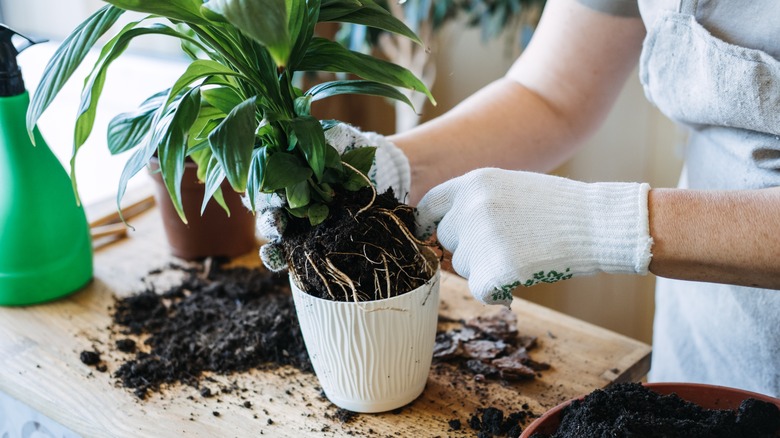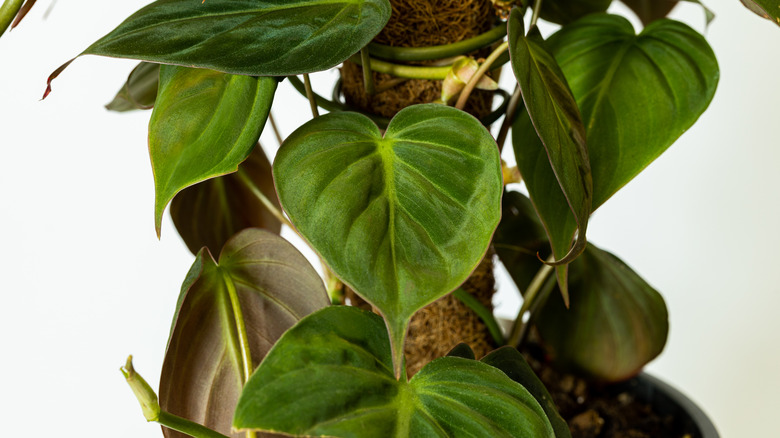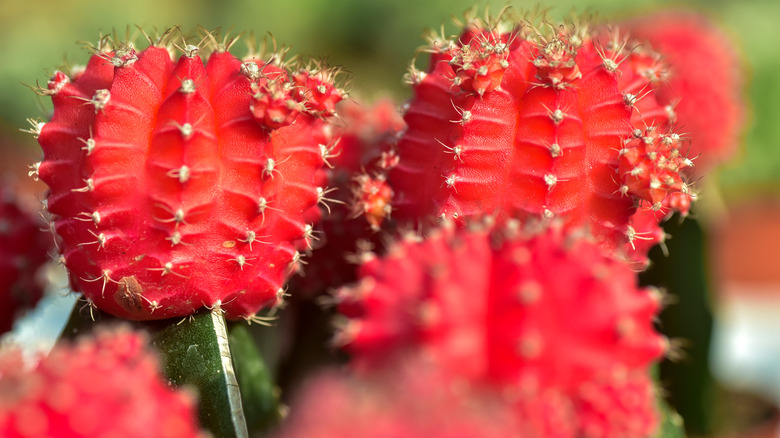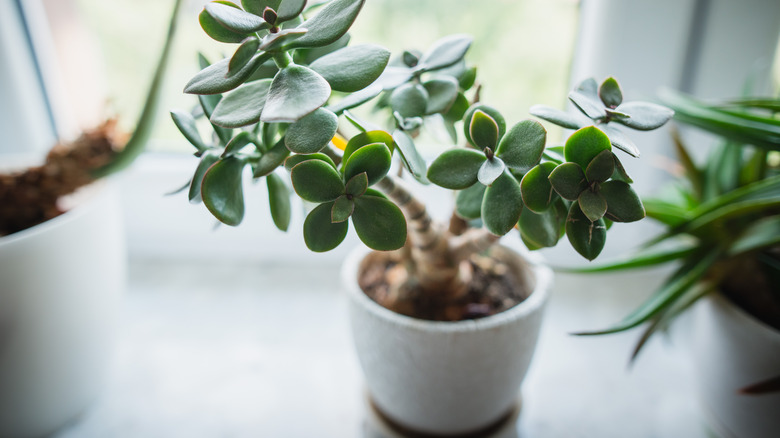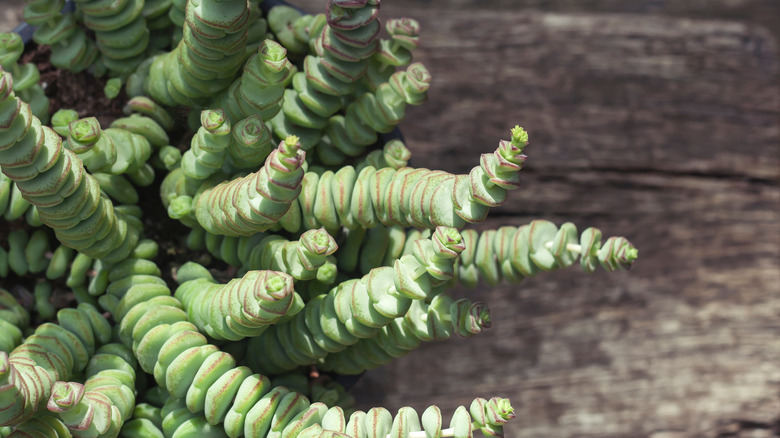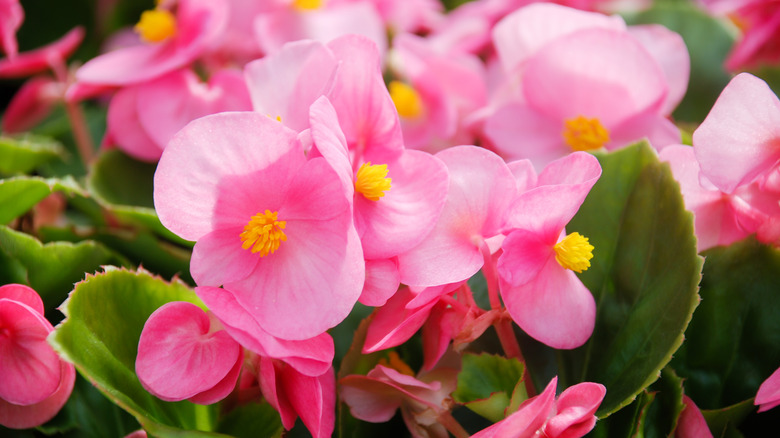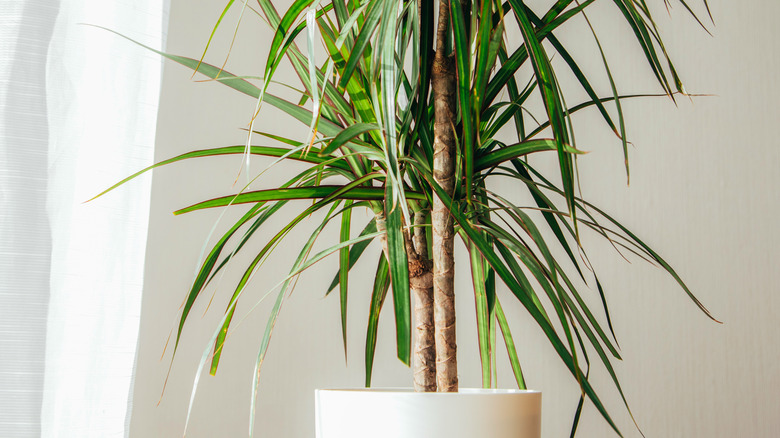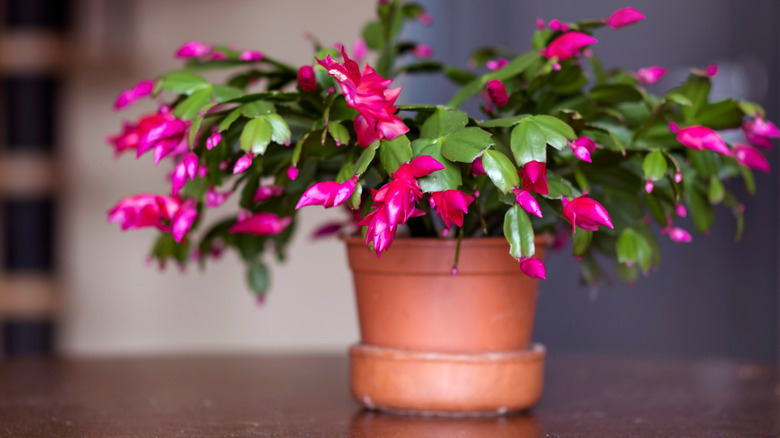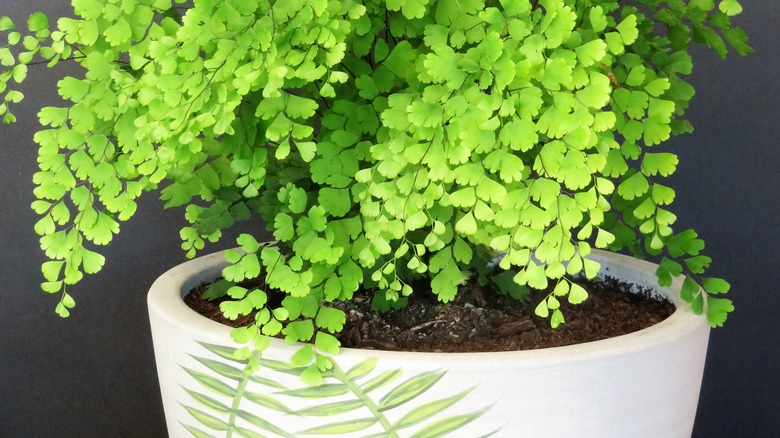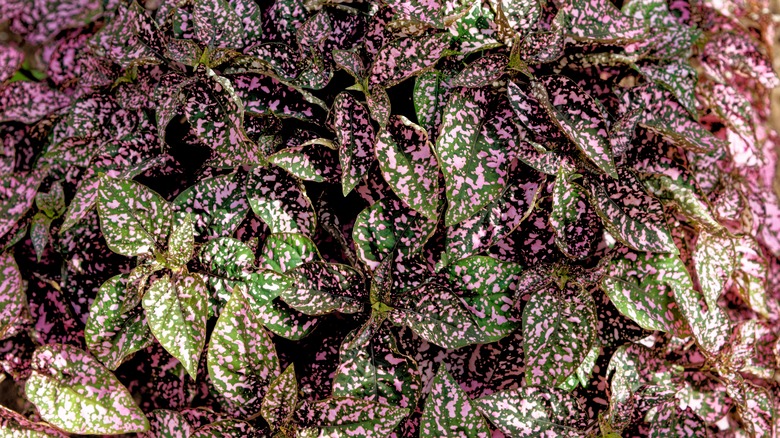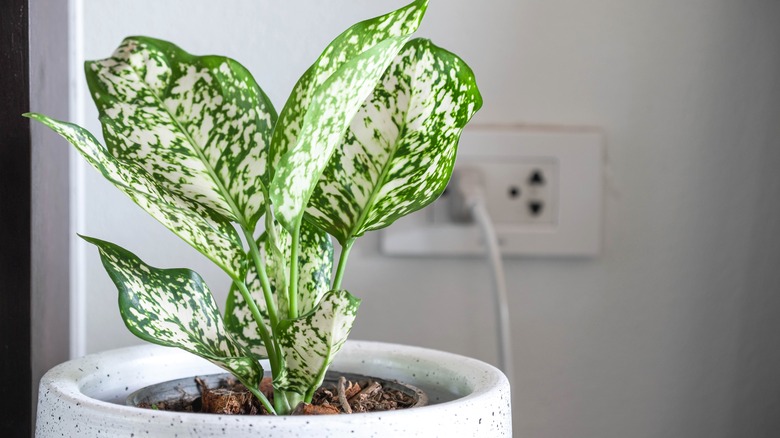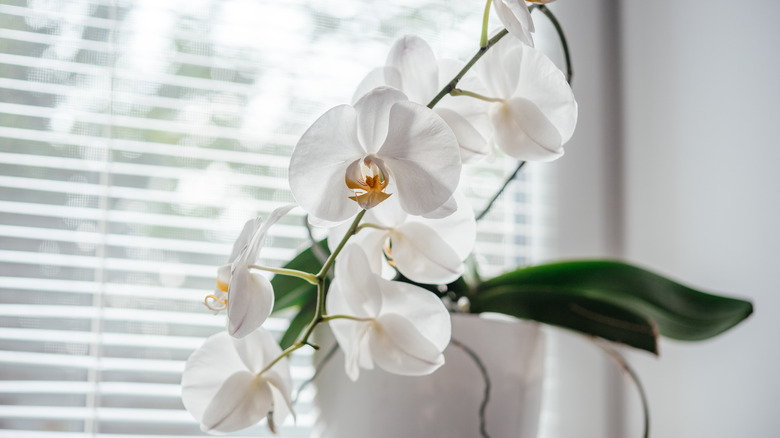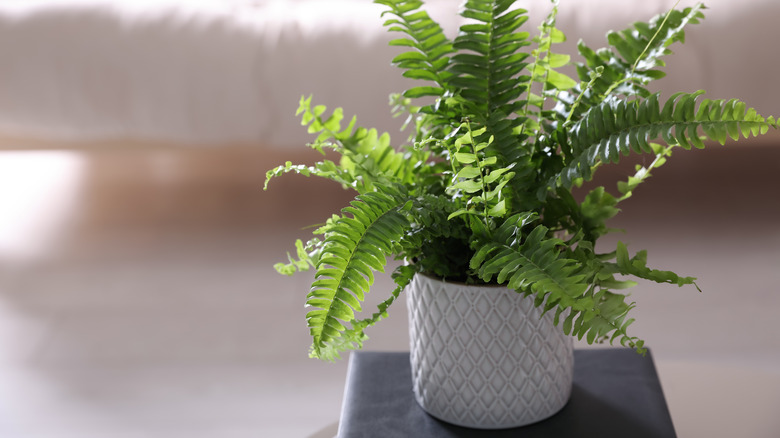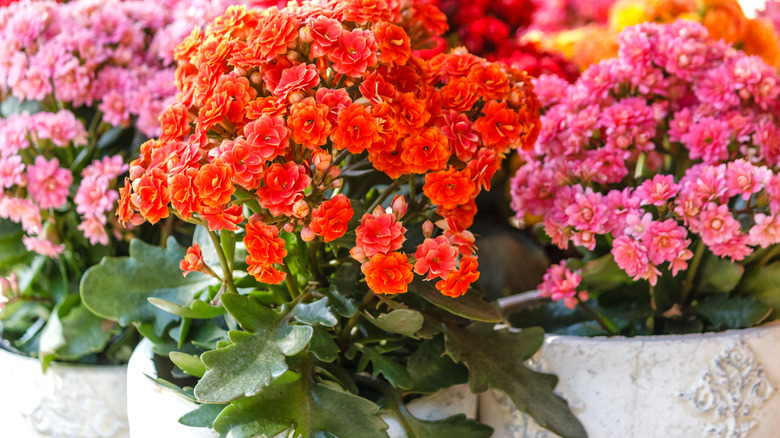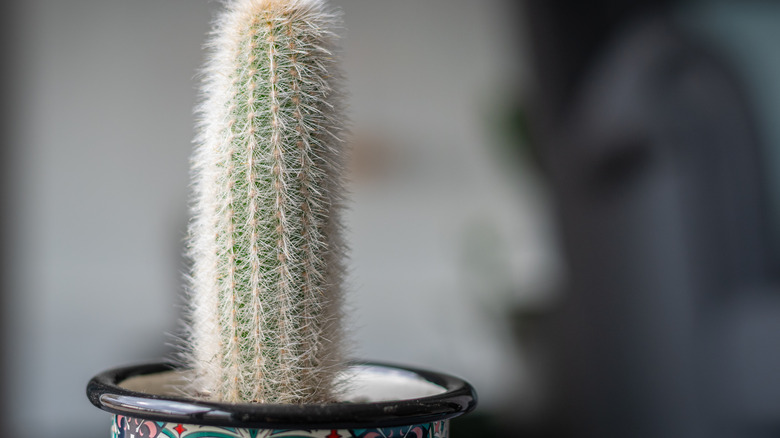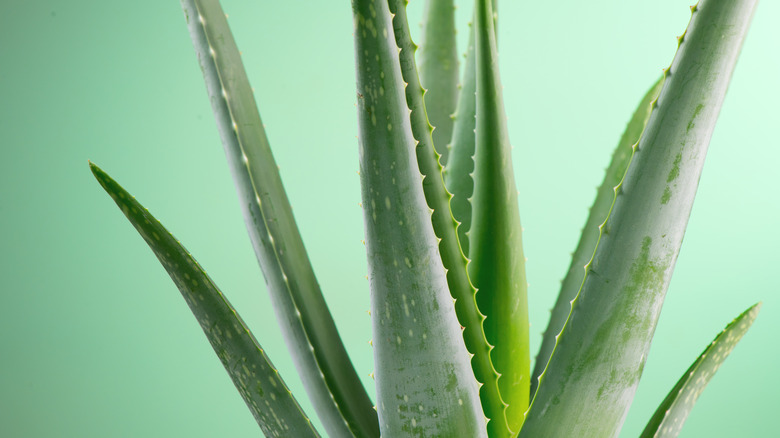15 Houseplants That Even Beginners Can Grow
Taking care of plants can be quite intimidating, especially if you have minimal experience. However, there are plants that are great for beginners who don't want a home full of dead plants. If you want to make sure they are out of the way as well, you can also hang them up by windows and other areas where they can stay beautiful and healthy. Actually, Mod + Mint says that hanging plants are really easy to take care of, especially for those who don't have time for routine maintenance.
We've chosen different types of houseplants for you to incorporate into your home based on your style and time. You can pick plants depending on the size of your space and how skillful you are when it comes to keeping them alive. These choices are specifically for those who are beginners and will help give your home a refreshing look, minus the worrying headache.
Devil's ivy
Devil's ivy (epipremnum aureum) is a plant that is easy to take care of, as it only needs minimal sunlight, per North Carolina Extension Gardener. However, you will have to spray a mist of water onto the leaves on a regular basis because it enjoys high levels of humidity, but the soil should only be watered when dry. It can grow long vines about 40 feet, and the leaves become a beautiful, glossy heart shape with a vibrant green color.
Moon cactus
The moon cactus (gymnocalycium mihanovichii) is a great indoor plant as it thrives in room temperature environments and prefers indirect sunlight, per Succulent City. It comes in many beautiful colors, such as bright orange, hot pink, and a beaming yellow. This succulent should be watered when the soil is dry, more regularly during spring and summer but less frequently during the winter. The pot should be able to drain the water well; if not, its roots may begin to rot.
Jade
Jade (crassula ovata) is a houseplant that some believe will bring them wealth, per House Plants Expert. It grows as though it's a mini tree and reaches a height of about 3 feet tall. This plant is also considered a succulent, meaning it has good water retention. It needs to be watered when the soil is dry, but it does adore a few hours of sunshine every day. Its soil should be gritty and have the ability to drain water and prevent root rot. To keep them extra healthy, you should also provide a few drops of diluted fertilizer every two weeks.
String of buttons
String of buttons (crassula perforata) is a great indoor plant with a unique spiral pattern at the stem that the leaves create, per Succulents and Sunshine. It loves full or partial sun, so a great spot for this succulent would be by a window. Like many other plants, it also needs to only be watered whenever you see the soil has turned dry. It can grow up to 18 inches tall, which can make it a great focal point in your home office or bedroom.
Begonia
The begonia (semperflorens-cultorum group) can handle a variety of sunlight but does better in brightly lit areas, per North Carolina Extension Gardener. It should be watered regularly, which can be cut down during the cool winter months. This leafy succulent produces flowers, each possessing four to five petals, that are either pink, burgundy, or white, blooming in the fall, spring, and summer. It only grows around 6 inches to 1 foot tall, making it a great plant for any room in your residence.
Madagascar dragon tree
The Madagascar dragon tree (dracaena marginata) is known for being able to survive, even if you forget to water it for weeks or even months, per House Plants Expert. It grows slowly but can reach up to 8 feet tall, making it a great statement piece. It has a thin trunk, as well as skinny, pointed leaves that go in multiple directions. It prefers indirect sunlight, as direct sunlight will harm its leaves, and the soil should be kept moist most of the year, but not as much during the winter.
Holiday cactus
The holiday cactus (schlumbergera x buckleyi) is a unique plant as the long, drooping stems that lead down to the flowers are scalloped, and the flower color is usually pink or purple, per North Carolina Extension Gardener. It prefers indirect sunlight but can handle direct sunlight for about two to six hours a day. The soil should be well-drained and should be watered only when you see that the soil has dried out. The flowers bloom in the winter, providing you ample color, and it can grow 6 inches to 1 foot high, creating a luscious visual.
Maidenhair fern
The maidenhair fern (adiantum raddianum) is capable of quickly growing up to 1 to 2 feet tall, with the same width, per Gardenia. It prefers partial shade and a typical water schedule to grow out its beautiful, green, small leaves. It loves being in a humid environment and shouldn't be placed anywhere there might be a draft. This is a rather elegant houseplant to have, as it was given the Award of Garden Merit by the Royal Horticultural Society.
Polka dot plant
The polka dot plant (hypoestes phyllostachya) is known to be easy to maintain, as it adds a fun, new color to your home, according to Houseplant Central. This colorful plant comes in shades of pink and silver and, as the name implies, has visible dots all over each leaf. It desires bright, indirect sunlight, and you only need to water it twice a week or more depending on how dry your home is, as the soil should be kept moist.
Chinese evergreen
The Chinese evergreen (aglaonema commutatum) loves indirect sunlight, as well as being kept in the shade, per North Carolina Extension Gardener. It can grow up to 1.5 feet tall and has long, green leaves that can grow 4 to 8 inches long and 2 to 3 inches wide. The edges of the leaves maintain a green color, while the middle is painted with a unique gray, giving the plant more dimension. From spring to fall, the soil should be kept moist; however, in the winter, the plant desires soil that is drier.
Moth orchid
The moth orchid (phalaenopsis) can flower at any time of the year as long as you take care of it, per Our House Plants. They produce beautiful white flowers that last a very long time and will look great on top of a desk or accented on a coffee table. It prefers medium shades of light, as direct light should never be hitting the plant. Watering the plant is pretty easy; in the summer, it only needs to be watered once or twice a week and a lot less in the winter, either once a week or less.
Boston fern
The Boston fern (nephrolepis exaltata) is a beautiful, stiff, leafy plant that's easy to take care of and was popular during the Victorian era, per Our House Plants. This fern needs to be watered whenever the surface is dry. If properly watered, it will return the favor by cleaning the air in the room it's placed in. It can stay healthy and beautiful if placed in an area that provides bright but indirect light. Every few months, the Boston fern also enjoys consuming an all-purpose fertilizer that's labeled as normal strength.
Flaming Katy
The flaming katy (kalanchoe blossfeldiana) is a succulent that produces small flowers of different colors; pink, red, yellow, lilac, and orange, per House Plants Experts. Flaming katy likes bright, indirect sunlight and the soil doesn't need constant watering, only when you've seen that it has dried out a bit. When watered, it needs a bit more water than is typically given. The soil should be a potting mix that has good draining capabilities. If you're someone who is quite busy, then you would love this plant as it can survive, even if you forget about it for a days.
Silver torch cactus
The silver torch cactus (cleistocactus strausii) is native to regions in Bolivia and is known as a perennial flowering plant, per Brainy Gardener. This plant thrives in full sunlight, so you'll need to place it by a window. You don't have to worry too much about watering, as it is able to tolerate drought-like conditions, but when you do, you should water it thoroughly so the roots can soak up and develop correctly. The soil should be well-drained to allow the roots to properly dry, and provided diluted fertilizer twice a month starting in the spring until the end of summer.
Aloe vera
Aloe is a houseplant that not only is easy to grow but has healing properties, per Almanac. It's typically used to soothe burns and scratches with the gel that is contained within the leaves it grows. It does well in either full or partial sun exposure and should be watered on a regular basis; the soil should be somewhat dry before watering but not too dry. You should plant it in a terracotta pot, as the leaves can get heavy, and this type of pot is strong enough to prevent the plant from tipping over.
